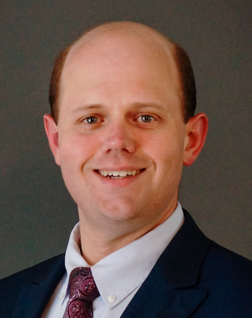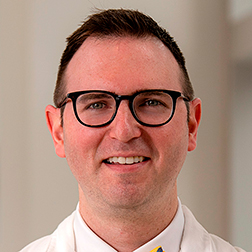Article:
All Together Now: Implementation of an Interprofessional Critical Care Educational Curriculum.
Cooper AZ, Byrd C, Elefritz JL, Gerlach AT, Hinduja A, McCallister J, Vazquez D, and Murphy CV. ATS Scholar 2021;2(3):304-308.
Summary:
Despite the broad recognition of the need to break down the silos that separate medical disciplines, few models are available to guide the development of interdisciplinary educational programs for critical care trainees. To address this problem, Cooper et al created an Interdisciplinary Education Series (IES), a multidisciplinary, cross-institutional educational collaboration between all of the critical care training programs at Ohio State. The IES included didactic curricula to combine trainees from multiple critical care programs (MICU, NCCU, SICU, and advanced practice provider fellowships and the critical care pharmacy residency) . The authors evaluated pre- and post-intervention responses on the Readiness for Interprofessional Learning Scale (RIPLS) questionnaire, which represented positive attitudes towards interprofessional collaboration. Narrative survey responses, though not subjected to a formal thematic analysis, indicated that trainees noted a new sense of community among critical care divisions. Limitations to the study included its implementation at a single academic medical center and evaluation was limited to subjective experience and attitude data. The IES continues today, though it has transitioned to a virtual format during the SARS-CoV-2 epidemic.
Interview:
JC: Thank you for talking with us about your research. Can you share with our readers how the Interdisciplinary Education Series (IES) was created in 2018 and how it has evolved over time?
AC: The IES was created as a multidisciplinary, cross-institutional educational collaboration between all of the critical care training programs at Ohio State. We had two main overarching goals: minimize redundancy between the didactic curricula of the various programs and foster a culture of collaboration across different ICUs and training programs. Leaders from all the critical care programs (MICU, NCCU, SICU, and advanced practice provider fellowships and the critical care pharmacy residency) came together to build and run the series. We built a three-pillared structure for the curriculum: didactic sessions with core topics of relevance to all critical care trainees, a trainee-led journal club, and Critical Care Grand Rounds. Each session type occurs once per month. All programs still have their own critical care curriculum, but IES has allowed for more efficient and focused teaching on topics specifically relevant to each specialty (with topics relevant to all specialties occurring in IES). Over time, we have kept the same structure with adaptations to virtual learning in the COVID-19 pandemic.
JC: You mention that the IES was developed and implemented at a large, academic medical center. How could it be implemented in different training environments?
AC: The IES was created in a large academic medical center with a robust, multidisciplinary critical care training environment. But the educational principles that inform IES could certainly be used to construct a similar type of program in other contexts, where shared learning across different training programs is desired. These principles include outlining clear curricular objectives from the beginning, creation of a core group of leaders to plan, implement, and champion the series, emphasis on proven pedagogical strategies (such as active learning), outlining of expectations for learners from the outset (such as attendance and participation), and flexibility in response to formative feedback from participants.
JC: How did the inclusion of pharmacy residents, nurse practitioner fellows, and their instructors in addition to physicians impact the program?
AC: The multidisciplinary nature of IES has been crucial to its success, both in terms of achieving education goals and impacts on institutional culture across the various ICUs. But most of all it has emphasized that we are all lifelong learners and can find joy in helping educate each other.
JC: You mention that "cultivation of interdisciplinary collaboration" was a goal of this program. Though your survey data did not show significant differences before and after the intervention, how have you seen the IES have an impact on the interdisciplinary culture at your institution?
AC: We did not see a significant difference in readiness for interprofessional learning among trainees, as measured by the RIPLS scale, before and after implementation of IES. We attributed this finding to a high baseline level of interprofessional readiness among our learners. But we have noticed a more robust collaborative culture across ICUs and critical care training programs. This trend, which began before the current pandemic, has only been accentuated by the demands of COVID-19.
JC: With the rapid adoption of virtual learning technology during the COVID-19 pandemic, barriers to inter-institutional education have been lessened. Do you think the IES, or a similar program, could be implemented across multiple institutions and why or why not?
AC: I think something like IES could be implemented across multiple institutions, but such a goal would bring additional logistical and funding challenges. In addition, the main advantages for virtual formats in IES has been the ability to bring in grand rounds speakers from across the country. At the same time, in person instruction was vital to the early success of IES and we look forward to returning to in person/hybrid formats soon.
Blog Post Author

Dr.Chiles is a third-year fellow in Pulmonary and Critical Care Medicine at the University of Alabama at Birmingham. His academic interests include medical education and using multi-omic approaches to gain insight into the causes of pulmonary diseases.
Twitter: @DocCheeles
Article Author

Avraham Z. Cooper, MD is an Assistant Professor of Medicine and Pulmonary and Critical Care Medicine physician at The Ohio State University, where serves as the Assistant Program Director of the Pulmonary and Critical Care Medicine fellowship program. He is a member of the podcast team at ATS Scholar and co-hosts his own podcast called The Curious Clinicians.
Twitter: @AvrahamCooperMD



